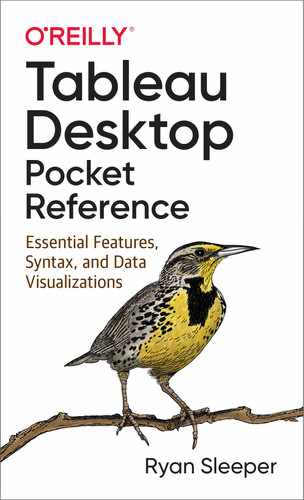In a crowded field of data visualization and analytics tools, Tableau Desktop has emerged as the clear leader. This is partly due to its ease of use, but once you dive into Tableau's extensive feature set, you'll understand just how powerful and flexible this software can be for your business or organization. With this handy pocket reference, author Ryan Sleeper (Innovative Tableau) shows you how to translate the vast amounts of data into useful information. Tableau has done an amazing job of making valuable insights accessible to analysts and executives who would otherwise need to rely on IT. This book quickly guides you through Tableau Desktop's learning curve. You'll learn:
And more!
Table of Contents
- Preface
- 1. Tableau’s Product Ecosystem
- 2. Shaping Data
- 3. Connecting to Data
- 4. Tableau Terminology
- 5. Dimension Versus Measure
- 6. Discrete Versus Continuous
- 7. How to Make a Bar Chart
- 8. How to Make a Line Graph
- 9. How to Make a Scatter Plot
- 10. Filters
- 11. Calculated Fields
- 12. Parameters
- 13. Sets
- 14. Dashboards and Distribution
- Index
